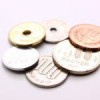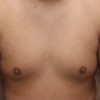chm138 lab report experiment 3 limiting reagent of reaction
This means: 6 mol O2 / 1 mol C6H12O6 . 0000006797 00000 n CHEM 2115. Figure \(\PageIndex{1}\): Folding the filter paper in half, Figure \(\PageIndex{2}\): Folding the filter paper in fourths, Figure \(\PageIndex{3}\): Opening the filter paper, Figure \(\PageIndex{4}\): Wetting the filter paper. 5. 3 EXPERIMENT PROCEDURE 1. 0000005382 00000 n Whether you realize it or not, this concept possesses very practical applications in the real world. The company's materials and parts manager is currently revising the inventory policy for XL-20, one of the chemicals used in the, Please read the case study entitled"The Equifax Data Breach" from the chapter 1 of the Business Ethicstextbook. Dissolve a small amount of cobalt (II) nitrate, Co(NO3)2, in about 20 mL of distilled water. There are two ways to determine the limiting reagent. Assume that all of the water is consumed, \(\mathrm{1.633 \times \dfrac{2}{2}}\) or 1.633 moles of Na2O2 are required. Describe the appearance of the mixture. 0000022033 00000 n For this experiment, you are being tasked with writing a complete lab report. QUESTIONS : 1. 0000007186 00000 n If less than 6 moles of oxygen are available per mole of glucose, oxygen is the limiting reactant. It also can determines the, amount of product that is formed. 2 Pages. 2)Why the process of heating hydrate compound should be started slowly first? air water molecule can be remove by heating the crucible the crucible is no heated before the Marterials:-400mL beaker-Stirring rod-Hot plate-250mL beaker-Graduated cylinder. Name Matrix No the thermal decomposition. Moles of CC.O-H.0 (or Caco) precipitated (mol) 2. Educational Research: Competencies for Analysis and Applications (Gay L. R.; Mills Geoffrey E.; Airasian Peter W.), Civilization and its Discontents (Sigmund Freud), The Methodology of the Social Sciences (Max Weber), Principles of Environmental Science (William P. Cunningham; Mary Ann Cunningham), Psychology (David G. Myers; C. Nathan DeWall), Chemistry: The Central Science (Theodore E. Brown; H. Eugene H LeMay; Bruce E. Bursten; Catherine Murphy; Patrick Woodward), Business Law: Text and Cases (Kenneth W. Clarkson; Roger LeRoy Miller; Frank B. 2. Step 8. Thank you in advance. Find the limiting reagent by calculating and comparing the amount of product each reactant will produce. In this essay, the author. Step 6. Mass of excess reactant in salt mixture ) formula of excess hydrate 5. The excess would not have had a reaction due to the fact that the substance was already used. <]>> % = Q&A `Suppose you were tasked with . 0000002786 00000 n 0000000933 00000 n Acetylsalicylic acid, commonly known as aspirin, is the most widely used drug in the world today. experiment 3 resistance and ohm experiment 3 chm138 introduction to titration studocu 3 holthaus haley docx experiment 3 introduction to data experiment 3 limiting reagent of reaction studocu chem1310 lab report \[4\, \text{Tires} + 2\, \text{Headlights} = 1\, \text{Car} \nonumber\]. Solved Experiment 8 Report Sheet Limiting Reactant Date loze | Chegg.com Free photo gallery. The filter paper is placed in the funnel and water is added to the filter paper to keep it in place (Figure 4). Course Hero is not sponsored or endorsed by any college or university. -The mol of water (x) in barium chloride hydrate (BaCl.xHO) has been calculate using percent . Analyze the aspirin and estimate its purity. When decanting, the precipitate is given time to settle to the bottom of the container. Theoretical Yield : Maximum amount of product obtained (calculated from chemical equation), Mass of Na 2 CO 3 (g) Step 4: Use the amount of limiting reactant to calculate the amount of CO2 or H2O produced. By doing this we were able to test the supernatants for see if a reaction occurred. There are several ways to separate a solid from a solution. Typically, one of the reactants is used up before the other, at which time the reaction stops. Legal. Round your final answers to nearest whole. Procedure: 1. In this experiment, you will predict and observe a limiting reactant during the reaction which involves the reduction of copper (II) chloride dihydrate. Be sure to answer all of them as you go. The chemical that is used up is called the limiting reactant while the other reactant is present in excess. Because the ratio is 0.478 to 0.568, 28.7 grams of SiO2 do not react with the H2F2. Moles of limiting reactant in salt mixture (mo! lid plus hydrate after first heating is 62,after second heating is 62 and after third heating PNPlFGy_}X+siT)uqmdT%:e[F"t(_I^j>~E^jWsKENk0z#mED";sxbO*?|jYk-@,++7&aQS:Qv^M10Pw|5iRoEo'=Yvq7h!r-y:i##ue`?tO~cK85{:-~^P%Fw!mZGm]gc $3T[ 3-1 Experiment 3 Limiting Reactants Introduction: Most chemical reactions require two or more reactants. If necessary, calculate how much is left in excess of the non-limiting reagent. Rinse several time to collect as much solid as possible (Figure 5). 1.25 mol - 0.8328 mol = 0.4172 moles of oxygen left over, Example \(\PageIndex{2}\): Oxidation of Magnesium, Calculate the mass of magnesium oxide possible if 2.40 g \(\ce{Mg}\) reacts with 10.0 gof \(\ce{O_2}\), \[\ce{ Mg +O_2 \rightarrow MgO} \nonumber\], \[\ce{2 Mg + O_2 \rightarrow 2 MgO} \nonumber\], Step 2 and Step 3: Converting mass to moles and stoichiometry, \[\mathrm{2.40\:g\: Mg \times \dfrac{1.00\: mol\: Mg}{24.31\:g\: Mg} \times \dfrac{2.00\: mol\: MgO}{2.00\: mol\: Mg} \times \dfrac{40.31\:g\: MgO}{1.00\: mol\: MgO} = 3.98\:g\: MgO} \nonumber\], \[\mathrm{10.0\:g\: O_2\times \dfrac{1\: mol\: O_2}{32.0\:g\: O_2} \times \dfrac{2\: mol\: MgO}{1\: mol\: O_2} \times \dfrac{40.31\:g\: MgO}{1\: mol\: MgO} = 25.2\: g\: MgO} \nonumber\], Step 4: The reactant that produces a smaller amount of product is the limiting reagent. A small amount of sulfuric acid is used to accelerate the reaction, but the sulfuric acid is . : an American History (Eric Foner), Biological Science (Freeman Scott; Quillin Kim; Allison Lizabeth), Brunner and Suddarth's Textbook of Medical-Surgical Nursing (Janice L. Hinkle; Kerry H. Cheever), Forecasting, Time Series, and Regression (Richard T. O'Connell; Anne B. Koehler), Campbell Biology (Jane B. Reece; Lisa A. Urry; Michael L. Cain; Steven A. Wasserman; Peter V. Minorsky). What is the limiting reagent in this reaction?3. However, you need to pay attention to what occurs in each step along the way. 0000014156 00000 n balanced equation, (-ve) Percent Yield = Actual yield x 100 Theoretical yield fPROCEDURE: 1. Therefore, by either method, C2H3Br3is the limiting reagent. 0000010805 00000 n 0000001198 00000 n Find the limiting reagent by looking at the number of moles of each reactant. Limiting Reagents is shared under a CC BY-SA 4.0 license and was authored, remixed, and/or curated by Sarick Shah. With 14 headlights, 7 cars can be built (each car needs 2 headlights). is obtained by minus mass of crucible plus lid plus hydrate before heating and the mass after first 0000008134 00000 n Therefore, the mole ratio is: (0.8328 mol O2)/(0.208 mol C6H12O6). Known Theoretical yield -0.2985g CaC24 2Ox HO %yield = 0.2985/0.986 x 100 = 30.27% Supernatant test -CaCl2 -Formed precipitate Unknown, Mass of mixture -1.123g Mass of excess -1.0146g Mass of limiting reagent -0.1084g Mass of precipitate -0.148g %mass= 1.014/1.123 x 100 = 90.3%. While you are waiting, calculate the mass of Co(NO3)2 added to each beaker and record these amounts in the table in your notebook. You'll get a detailed solution from a subject matter expert that helps you learn core concepts. %%EOF Step 5: The reactant that produces a larger amount of product is the excess reagent. trailer |=R Assuming that all of the oxygen is used up, \(\mathrm{0.0806 \times \dfrac{4}{1}}\) or 0.3225 moles of \(CoO\) are required. Criminal Misappropriation & Criminal Breach of Trust, LAB Report BIO Identification of biological molecules in food experiment 1, Nota Penggunaan Penanda Wacana dan Ayat-Ayat untuk Karangan SPM, 3 set Soalan Pengajian Am Penggal 1 dari Pelbagai Negeri (900/1), Vernier calliper physics lab report experiment 1 measuring rectangular object, Accounting Business Reporting for Decision Making, 1 - Business Administration Joint venture. Although more cars can be made from the headlights available, only 5 full cars are possible because of the limited number of tires available. Example \(\PageIndex{4}\): Limiting Reagent. How to Find the Limiting Reagent: Approach 2. With 20 tires, 5 cars can be produced because there are 4 tires to a car. 11 LABORATORY TECHNIQUES 1. Exam Pool Chapter 3 - Dr. Rita Upmaics lecture material, Exam Pool Chapter 5 - Dr. Rita Upmaics lecture material, Health and Illness Across the Lifespan (NUR2214), Business Professionals In Trai (BUSINESS 2000), Operating Systems 1 (proctored course) (CS 2301), Business Law, Ethics and Social Responsibility (BUS 5115), History Greek & Roman Civilization (hist 1421), Organic Chemistry Laboratory I (CHEM 223), Microsoft Azure Architect Technologies (AZ-303), Management of Adult Health II (NURSE362), Concepts Of The Nurse As Leader/Manager (NURS 4200), Professional Application in Service Learning I (LDR-461), Advanced Anatomy & Physiology for Health Professions (NUR 4904), Principles Of Environmental Science (ENV 100), Operating Systems 2 (proctored course) (CS 3307), Comparative Programming Languages (CS 4402), Business Core Capstone: An Integrated Application (D083), ECO 201 - Chapter 2 Thinking like economist part 1 - Sep 9, TB-Chapter 22 Abdomen - These are test bank questions that I paid for. see the table 1 on page 2). Our final step is to determine the theoretical yield of \ce {AlCl}_3 AlCl3 in the reaction. Staley, Dennis. (NO3)3 9H2O as the limiting reagent. mass of BaClxHO result is acceptable because the percent to be expected is around 28.00% \[0.1388\; \rm{ mol}\; C_6H_{12}O_6 \times \dfrac{6 \; \rm{mol} \;O_2}{1 \; \rm{mol} \; C_6H_{12}O_6} = 0.8328 \; \rm{mol}\; O_2 \nonumber\]. The mass of the mixture(1.123g) is equal to the mass of the excess(1.0146g) plus the mass of the limiting(0.1084g) is also equal to the mass of the precipitate(0.148g). We were then prompted to find the limiting reactants. Record the concentrations of the Co(NO3)2 and Na3PO4 solutions in your notebook. Finally with the results we found, we used them to determine other sorts of data such as %yield and %mass. 4NH 3 + 5O 2 4NO + 6H 2 O Since the 4.00 g of O 2 produced the least amount of product, O 2 . B. consumed. The LibreTexts libraries arePowered by NICE CXone Expertand are supported by the Department of Education Open Textbook Pilot Project, the UC Davis Office of the Provost, the UC Davis Library, the California State University Affordable Learning Solutions Program, and Merlot. 307 Words. 62.5152g mass increase in every heating session mass of barium chloride anhydrous is 1 Sulphuric Acid by Titration, CHM138 LAB Report EXP 1 - BASIC LABORATORY TECHNIQUE, Lab Manual CHM138 content exp1, exp3 & exp 5, Experiment 2 CHM138: Determination Of Percent Composition In Hydrate Compounds, Swinburne University of Technology Malaysia, Management of Record in Organization (IMR451), English Workplace and Communication (ELC270), Diploma in Information Management (IM110), Business Administration (Human Resource Management) (AE11), Accounting Information Systems II (UKAI2063), Financial Institutions and Markets (FIN2024), Partnership and Company Law I (UUUK 3053), Partnership and Company Law II (UUUK 3063), Business Organisation & Management (BBDM1023), FIN420 - Financial Management (Question & Answer), EEL2026 Tut-2A Transmission Line Solutions, Rancangan Tahunan UNIT Bimbingan DAN Kaunseling 2021, Tugasan Individu : Ulasan Artikel Berkaitan Makroekonomi. There are two ways to determine the limiting reagent. $Y+F9%KEy A7+|cx9Lr"$ 0000006389 00000 n Lab 7: Limiting Reagent & Reaction . Limiting Reagent Lab Report Turn in Pages 3-5 as your graded lab report Data: Molarity of CaCl 2: _____ Molarity of Na 2 CO 3 . -Based on the experiment for Barium Chloride Hydrate,mass of empty crucible and lid is 62,after equation). 0000005636 00000 n Shown above is the equation we used to help us find the %mass if the products. Ration of mol given in To calculate the percentage yield of calcium carbonate. Because there is an excess of oxygen, the glucose amount is used to calculate the amount of the products in the reaction. Based on what you have learned in this unit, answer the following questions: Which, For each of the following independent cases, use the equation method to compute the economic order quantity. When the reaction occurred we were able to tell what the limiting reactant was. \[\mathrm{78\:g \times \dfrac{1\: mol}{77.96\:g} = 1.001\: moles\: of\: Na_2O_2} \nonumber\], \[\mathrm{29.4\:g \times \dfrac{1\: mol}{18\:g}= 1.633\: moles\: of\: H_2O} \nonumber\]. formula of limiting hydrate 3. the reaction we will be able to tell what the limiting reagent is in the reaction. We call these solids a precipitate. For example, if a 2.00 g sample of ammonia is mixed with 4.00 g of oxygen in the following reaction, use stoichiometry to determine the limiting reagent. When we perform . If more than 6 moles of O2 are available per mole of C6H12O6, the oxygen is in excess and glucose is the limiting reactant. 20 17 Decant and filter each reaction mixture from part II through a separate funnel, collecting its filtrate in a labeled beaker. Percent excess reactant in salt mixture (9) 7. Chm138 lab report experiment 3 limiting reagent of reaction. Dissolve a similar amount of sodium phosphate, Na3PO4, in a second 20 mL of water. Mass of filter paper (g) hYn}G26E`W+ldh%@0`4(RKrVy l^sxS?=0>lV?n60yZ=L &\l^Vy^ `d5K2OfTx/>p}Ng_5U#NnE{}1X]ZYWM5utA[UBY$"OL`9_54,c|NrW_U}NNnO/{vP# on the experiment for Compound A,mass of empty crucible is 70,after first heating is 70 -Crucibles are made of ceramic and it have broken bond that can absorb water molecules from the 0000000636 00000 n Divide the filtrate in half and test each half with the remaining Co (NO 3) 2 and Na 3 PO 4 solutions. Because there are only 0.568 moles of H, Physical and Chemical Properties of Matter, status page at https://status.libretexts.org. If you have 20 tires and 14 headlights, how many cars can be made? In this case, the headlights are in excess. Remember that the theoretical yield is the amount of product that is produced when the limiting reactant is fully consumed. chm138 lab report experiment 3 limiting reagent of reaction The reaction of Copper (II) Sulfate, CuSO4, mass of 7.0015g with 2.0095g Fe or iron powder produced a solid precipitate of copper while the solution remained the blue color. Based on the reaction we will be able to tell what the limiting reagent is in the reaction. What is the limiting reagent if 76.4 grams of \(C_2H_3Br_3\) were reacted with 49.1 grams of \(O_2\)? and after second heating is 70.9124g few heating increases the mass of crucible mass of crucible OR Mass of excess reagent calculated using the mass of the product: \[\mathrm{3.98\:g\: MgO \times \dfrac{1.00\: mol\: MgO}{40.31\:g\: MgO} \times \dfrac{1.00\: mol\: O_2}{2.00\: mol\: MgO} \times \dfrac{32.0\:g\: O_2}{1.00\: mol\: O_2} = 1.58\:g\: O_2} \nonumber\], Mass of total excess reagent given mass of excess reagent consumed in the reaction, Example \(\PageIndex{3}\): Limiting Reagent.
Catching Killers: Dna Profiling Answer Key,
Melda Dorothy Rees,
Unc Charlotte Men's Tennis,
Articles C














